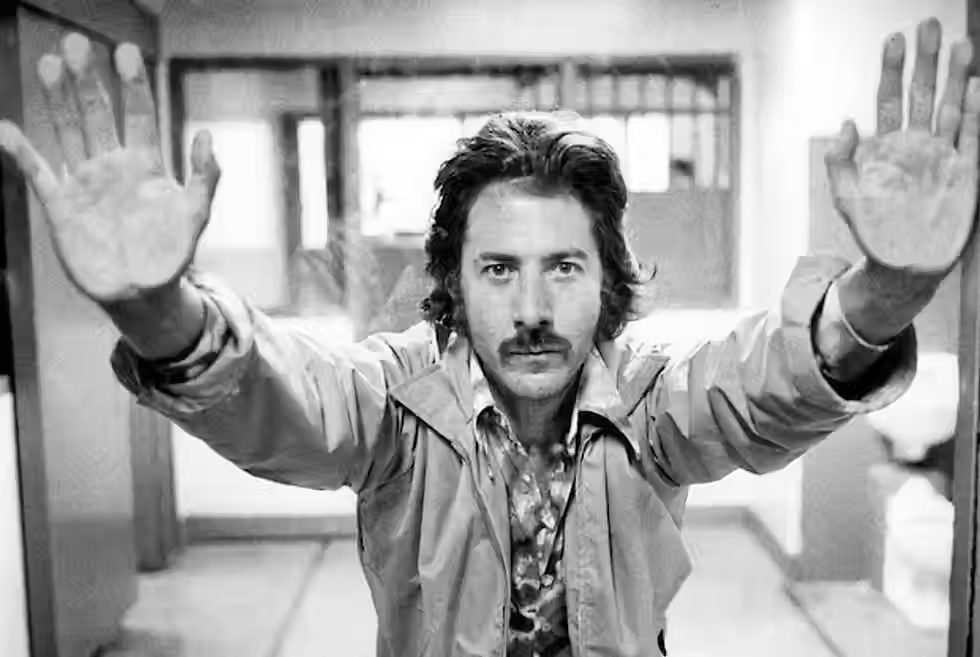Marathon Man (1976)
- Soames Inscker

- May 10, 2025
- 3 min read
Updated: Jun 8, 2025

Plot Summary
The story centres on Thomas "Babe" Levy (Dustin Hoffman), a Columbia graduate student and passionate long-distance runner who is unknowingly drawn into a deadly international conspiracy. His brother Doc Levy (Roy Scheider), a covert government agent, is murdered, and Babe soon finds himself pursued by sinister figures tied to the Nazi past.
At the heart of the plot is Dr. Christian Szell (Laurence Olivier), a former Nazi war criminal who comes out of hiding to retrieve a stash of diamonds. As Szell seeks to ensure his path is clear, Babe becomes his target—subjected to interrogation, torture, and one of cinema’s most famously unnerving scenes involving dental tools and the haunting question: “Is it safe?”
Performances

Dustin Hoffman is at his best here, playing a character whose intellectual innocence is slowly stripped away. Babe is an academic, not a spy or fighter, and Hoffman’s performance effectively conveys his fear, confusion, and growing desperation. His vulnerability is palpable, and it grounds the film emotionally.
Laurence Olivier, in one of his final great screen roles, delivers an unforgettable performance as Szell. Cold, precise, and terrifyingly rational, he creates a villain who is believable not because he rants or raves, but because he barely raises his voice. Olivier’s Nazi dentist is a terrifying blend of civility and cruelty—an embodiment of evil hiding behind professional calm.
Roy Scheider adds grit and emotional depth as Doc, providing the film’s early action beats and serving as the reluctant bridge between the spy world and Babe’s life. Marthe Keller and William Devane round out the supporting cast with layered performances that keep audiences guessing about their loyalties.
Direction and Atmosphere

Director John Schlesinger (Midnight Cowboy, Sunday Bloody Sunday) brings a moody, textured aesthetic to the film. He balances intimate character moments with bursts of violence and long stretches of tension. Schlesinger doesn’t overload the film with exposition; instead, he lets mystery and unease linger, which mirrors Babe’s slow realization of the truth.
Cinematographer Conrad Hall captures a gritty, 1970s New York—filled with shadows, industrial bleakness, and a sense of urban claustrophobia. The film’s pacing is deliberate but never dull, building an oppressive atmosphere that reaches its crescendo during the infamous torture scene.
Themes
Marathon Man isn’t just a thriller—it’s a reflection on post-war trauma, trust, and betrayal. It examines the lingering scars of the Holocaust and the ways in which old evils persist in modern life. It also deals with the loss of innocence, both personal and national, in a post-Watergate America where truth and safety are increasingly elusive.
Babe’s arc—from passive scholar to a man forced to confront and resist evil—mirrors a broader cultural anxiety about complicity, morality, and the price of survival.
Legacy
The film has endured as a high-water mark in 1970s suspense cinema. It was a critical and commercial success, with particular praise for Olivier, who earned an Academy Award nomination for Best Supporting Actor. William Goldman’s screenplay, known for its economical structure and quotable lines, helped establish the film as a genre classic.
Its influence is still felt today in modern thrillers that merge intelligence with action, and in the way it redefined the “chase film” as a psychological journey as much as a physical one.
Verdict
Marathon Man is a masterfully constructed thriller, brimming with tension, paranoia, and unforgettable performances. It’s as much about fear and identity as it is about espionage or conspiracy, and its legacy as a thinking person’s thriller remains intact nearly 50 years later.





